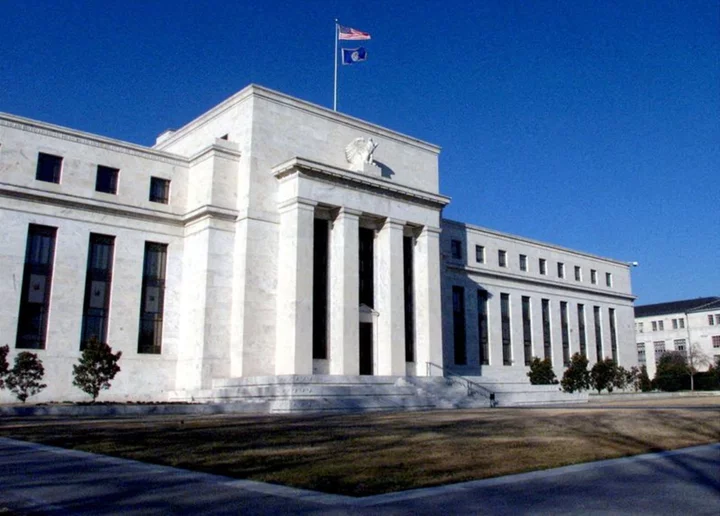By Howard Schneider
WASHINGTON Uncertainty around the path of the U.S. economy, including difficulties estimating the state of financial markets, potential oil price shocks, and the impact of labor union strikes, pushed Federal Reserve officials into a cautious stance at their meeting last month as debate proceeded over whether further rises in the central bank's policy rate would be needed, according to minutes of the Sept. 19-20 session released on Wednesday.
"A vast majority of participants continued to judge the future path of the economy as highly uncertain," said minutes of a meeting where the U.S. central bank agreed to hold rates steady even as a 12-7 majority indicated in new projections that one more rate increase might be needed by the end of the year to ensure inflation returns to the Fed's 2% goal.
Data volatility and revisions to prior statistical releases posed one set of problems in assessing the economy, the minutes said, as did determining underlying parameters like the neutral rate of interest, the impact of rising "real" rates being bid up by markets, and the degree to which tighter credit would ultimately curb business borrowing and spending.
All of that, the minutes said, were seen as "supporting the case for proceeding carefully in determining the extent of additional policy firming that may be appropriate," the minutes said, noting that "participants generally judged" that risks had become more two-sided. While global commodity markets and a strong housing market might lead to higher inflation, the minutes noted, tighter financial markets, slowing global growth, and recent labor strikes posed risks to economic growth and jobs.
Though policymakers are publicly aligned that there is still "work to do" with key measures of inflation remaining well above 3%, the minutes showed increased concern about the risks of going too far with rate increases and slowing activity so much it causes companies to lay off large numbers of workers.
Fed officials have said the economy's steady performance, despite aggressive rate hikes over the past 19 months, has kept unemployment low even as inflation has fallen from the peaks seen in mid-2022.
The debate is now over whether prices will continue to fall without any further rate increases, or whether slightly more restrictive monetary policy will be needed.
Fed officials this week, including hawkish policymakers like Governor Christopher Waller, have cited rising yields on Treasury debt, which can feed through to the cost of credit for businesses and households, as a force that could make further central bank rate increases unnecessary.
Investors since the September meeting have steadily discounted the likelihood of another Fed rate increase. They currently give only a 12% chance of a hike at the Oct. 31-Nov. 1 meeting and a roughly 26% chance at the Dec. 12-13 session, according to CME Group's FedWatch Tool.
(Reporting by Howard Schneider; Editing by Paul Simao)

